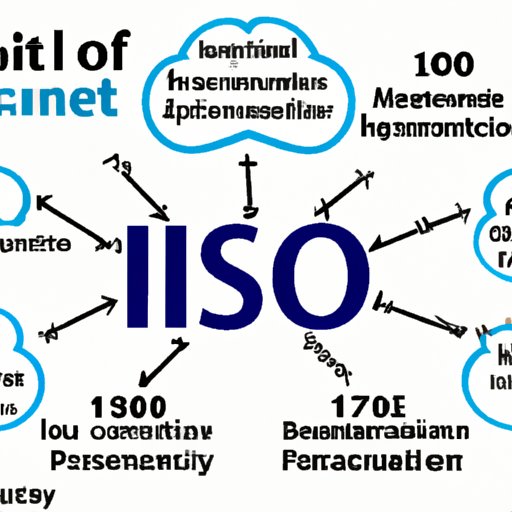Introduction
ISO stands for International Organization for Standardization. It is an independent, non-governmental organization that develops and publishes international standards to ensure quality and safety across various industries. In the realm of information technology (IT), ISO helps to create and maintain standards for software development, data security, and other aspects of IT.

Exploring the Basics of ISO in Information Technology
Let’s start by looking at the basics of ISO in information technology. What is ISO, and how does it apply to IT?
What is ISO?
ISO is an international organization that creates and maintains global standards for products, services, and systems. These standards are designed to promote safety, quality, and efficiency in many different industries, including information technology. ISO is a voluntary organization, meaning that companies can choose whether or not to adopt its standards.
How Does it Apply to IT?
In the realm of IT, ISO helps to create and maintain standards for software development, data security, and other aspects of technology. These standards help to ensure that IT products, services, and systems are safe and reliable. For example, ISO/IEC 27001 is an information security standard that provides guidelines for protecting data from unauthorized access and tampering. By following these standards, organizations can ensure that their IT systems are secure and compliant with industry regulations.
Understanding the Impact of ISO on Information Technology
Now that we have a basic understanding of what ISO is and how it applies to IT, let’s take a closer look at the impact of ISO on information technology.
The Role of ISO in Developing and Maintaining IT Standards
As mentioned previously, ISO helps to develop and maintain standards for IT products, services, and systems. By following these standards, organizations can ensure that their IT systems are secure, reliable, and compliant with industry regulations. Additionally, following ISO standards can help organizations reduce costs and increase efficiency by streamlining processes and reducing errors.
Examining the Benefits of ISO Compliance in IT
Adopting and adhering to ISO standards in IT can bring many benefits to organizations. For example, ISO compliance can help organizations improve their reputation and credibility, as customers and partners will view them as reliable and trustworthy. Additionally, ISO compliance can help organizations save money by reducing costs associated with errors, downtime, and data breaches. Finally, ISO compliance can help organizations stay ahead of the competition by ensuring that they remain up-to-date with the latest technologies and industry trends.

A Guide to Implementing ISO in Information Technology
Now that we have a better understanding of the role and benefits of ISO in information technology, let’s look at how organizations can implement ISO standards in their IT systems.
Defining Goals for ISO Compliance
The first step in implementing ISO in information technology is to define goals for ISO compliance. Organizations should consider which ISO standards they need to comply with and what areas of their IT system need to be improved. This will provide a roadmap for the implementation process and ensure that all stakeholders are clear about what needs to be done.
Establishing an ISO Compliance Team
Once goals have been defined, organizations should establish an ISO compliance team. This team should include representatives from all departments and levels of the organization, as well as any outside experts or consultants who may be needed. The team should be responsible for developing and overseeing the implementation process.
Developing a Comprehensive Implementation Plan
Finally, the ISO compliance team should develop a comprehensive implementation plan. This plan should outline the steps needed to achieve ISO compliance, as well as a timeline for completion. The plan should also include regular reviews to ensure that progress is being made and that any issues are addressed in a timely manner.
Conclusion
In conclusion, ISO plays an important role in information technology. It helps to create and maintain standards for software development, data security, and other aspects of IT. Adopting and adhering to ISO standards can bring many benefits to organizations, such as improved reputation and credibility, cost savings, and staying ahead of the competition. Finally, organizations should follow a set of steps when implementing ISO in their IT systems, including defining goals, establishing a compliance team, and developing a comprehensive implementation plan.
(Note: Is this article not meeting your expectations? Do you have knowledge or insights to share? Unlock new opportunities and expand your reach by joining our authors team. Click Registration to join us and share your expertise with our readers.)
